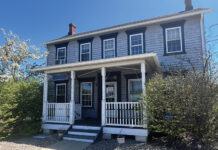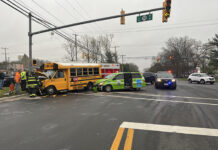
 LAKEHURST – Sarah Hurley was a private woman, who rarely spoke about her father and his place in history.
LAKEHURST – Sarah Hurley was a private woman, who rarely spoke about her father and his place in history.
She was born January 21, 1920 to Allen O. and Anna Moore Hagaman, their only child. Sarah Hurley’s son, Allen Hurley, said she used to say of her father that he never used foul language, never drank or smoke, and never spanked her.
Aside from a few passing comments over the years, that’s about all Allen Hagaman’s grandson knew about him.
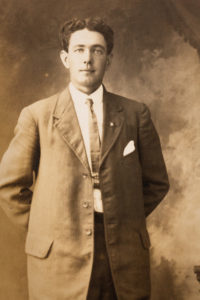
What Hagaman even looked like remained a mystery until very recently, when long buried photos, which passed from family member to family member, were finally discovered. Allen Hurley remembers some family saying he looked a bit like his grandfather. His daughter, Courtney Hurley, said her grandmother Sarah looked like Hagaman, especially around the eyes.
“My grandmother lived in the moment,” Courtney Hurley said. “We never heard her say one bad word.”
Allen Hurley remembers visiting the graves of his grandparents at Cassville Cemetery with his mother. His grandfather died in 1937. His grandmother died 10 years later, when Allen Hurley was just about one year’s old.
“We never pushed my mother to say anything. If she wanted to talk about it, she would have talked about it,” Allen Hurley said.
His mother was 16 years old, living on Cedar Street in Lakehurst, when her father died. He was a civilian lineman who got the odd job helping to land the Hindenburg, for a dollar a day. On May 6, 1937, delayed by rains for most of the day, the Hindenburg finally made its way to Lakehurst Naval Air Station.
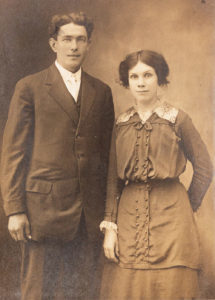
Chicago writer and editor Patrick Russell, who operates “Projekt LZ 129,” wrote that Hagaman was assigned to the aft ground handling team, the stern car group. That group would stand under the dirigible’s tail to anchor the ship’s lower tail fin. At 7:21 p.m., the group was directly under the Hindenburg.
“Several minutes later, there was a sudden light underneath the Hindenburg’s hull, and the men in the stern car group realized that the ship was on fire. From this point onward, until he was admitted to the base hospital half an hour later, nobody really knows exactly what happened to Allen Hagaman,” Russell wrote.
The Hurley family knows what little they do from newspaper clippings and Google searches, although even those stories vary. They do know that Hagaman suffered third-degree burns over most of his body. They know he died three hours after the explosion, although Allen Hurley had thought his grandfather was taken to Paul Kimball Hospital in Lakewood. Reading Russell’s article just the day before his interview with The Manchester Times, he realized his grandfather likely died in the base infirmary.
Two nurses from the base went to the Cedar Street house to take Anna and Sarah Hagaman to see their husband and father. According to records, Hagaman was in shock and uncommunicative, yet recognized his wife and daughter.

Of Hagaman’s four-man group – himself, civilian crew member Charles Exel, Navy machinists Arthur Clarence Terry and Charles Henry Barnes – Hagaman was the lone casualty.
Hagaman, a Cassville native who lived in Lakehurst since 1912, was 51.
Sarah Hurley kept the house on Cedar Street, renting it out for years until her son moved into it with his family in the late 1970s.
“I always thought he had his services at a funeral home. But back then people had their service in their homes,” Allen Hurley said. “I didn’t realize his funeral service took place in the house.” A newspaper clipping, from an unknown source, shows pall bearers exiting the Cedar Street home with Hagaman’s casket.
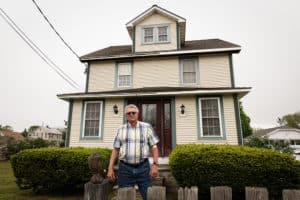
No one in the family would talk about Hagaman, or the Hindenburg, out of respect for Sarah Hurley. When LIFE Magazine published an entire issue on the Hindenburg tragedy in the 1960s, Sarah refused to look at it. She never saw the footage of the dirigible catching fire and crashing, and would never watch any documentaries or movies about it.
She did, however, work on the base, and would even take her sons, Allen and George, to the air shows featuring dirigibles. She would not, and never did, attend the remembrance ceremonies given in memory of the Hindenburg.
Sarah Hurley died in 1992 and is buried alongside her parents at Cassville Cemetery. Whatever memories she had of her father, she kept them unspoken.
Allen Hurley is named for both his grandfathers, his brother George, who died in 2007, for a cousin who perished in World War Two.

